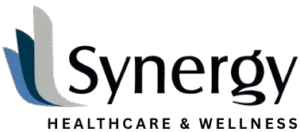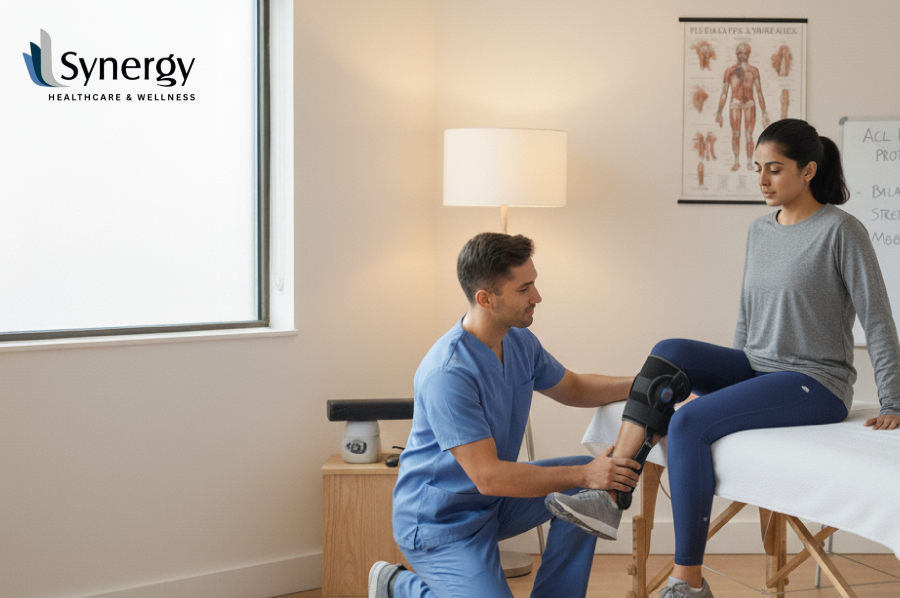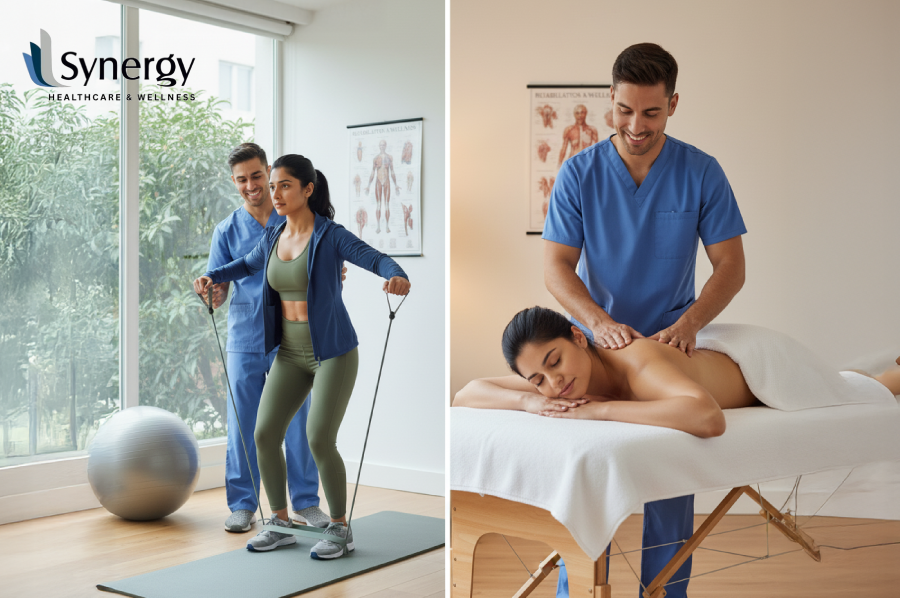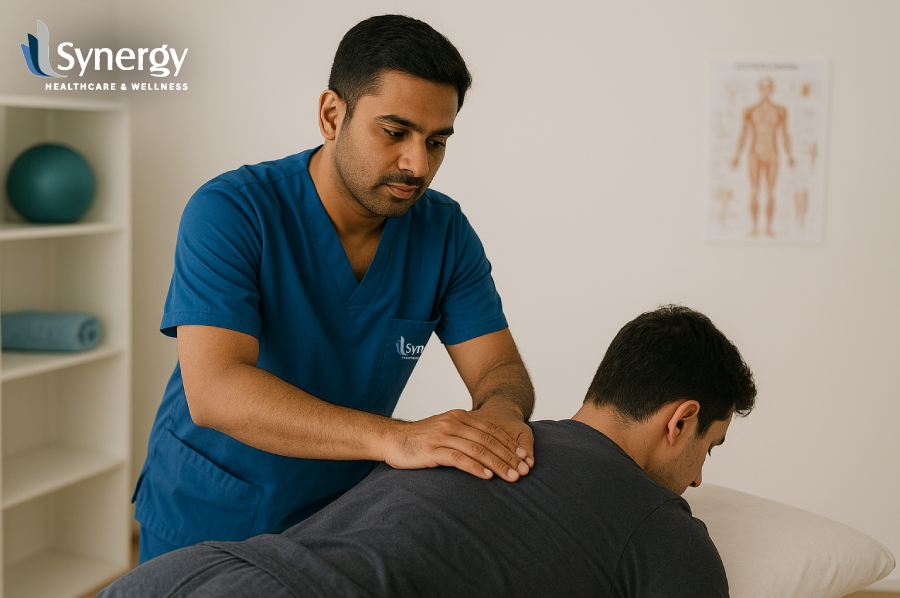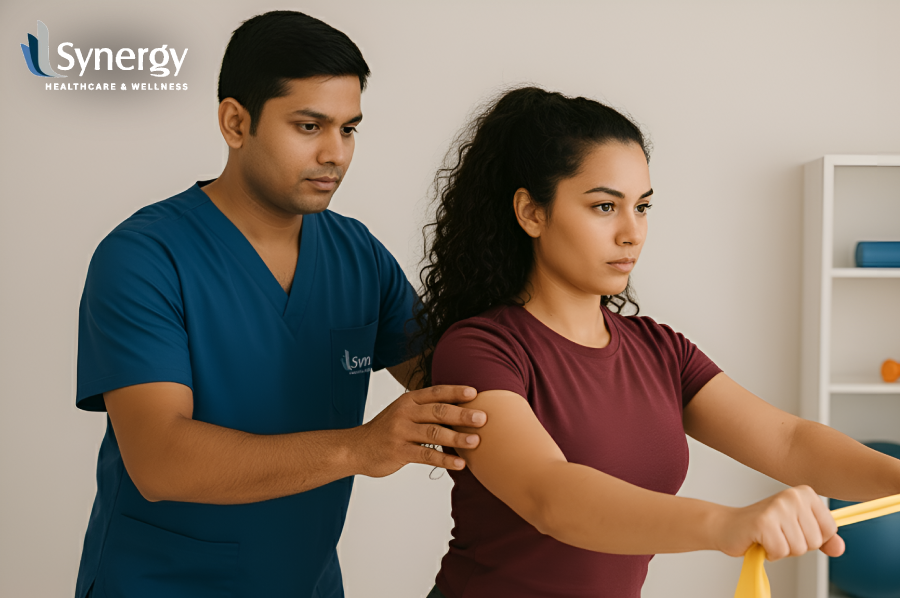A structured program of physiotherapy after angioplasty helps restore heart strength, mobility, and confidence during recovery. Guided exercises improve circulation, stamina, and overall cardiac function. With professional supervision and steady progress, patients regain independence while reducing future heart risk.
Introduction
Recovering from angioplasty surgery is a gradual process that involves more than rest and medication. A well-structured program of physiotherapy after angioplasty restores mobility, strengthens the heart, and helps patients regain confidence in daily activities. Under professional guidance, post-angioplasty physiotherapy offers practical steps to rebuild endurance and manage risk factors that can affect heart health in the long term.
Understanding Angioplasty and the Role of Physiotherapy
What Happens During Angioplasty and Stent Placement
During angioplasty, a thin catheter with a balloon is inserted into the narrowed coronary artery. When the balloon expands, blood flow improves, and a stent keeps the artery open. After surgery, muscles weaken, stamina drops, and anxiety often prevents movement. This is where physiotherapy after stent placement becomes essential.
Why Physiotherapy Matters in Cardiac Recovery
Early movement supervised by a physiotherapist for angioplasty recovery prevents complications such as blood clots, shortness of breath, or stiffness. Structured exercises improve heart efficiency, lung function, and circulation. In many cardiac units, cardiac rehabilitation physiotherapy begins within 24–48 hours once the patient’s vitals are stable.
Benefits of Physiotherapist-Led Recovery
A cardiac physiotherapist teaches controlled breathing, posture correction, and gentle mobility tasks that maintain oxygen levels and prevent deconditioning. Over time, regular sessions of physiotherapy after angioplasty build endurance and support long-term heart health.
Phases of Physiotherapy After Angioplasty
Phase 1: Inpatient Recovery (Day 0 – 7)
The first week focuses on safety and gradual re-engagement. Patients learn deep breathing, ankle pumps, shoulder rolls, and supported sitting. These mobility exercises after cardiac intervention reduce the risk of chest tightness and promote blood flow. A therapist monitors heart rate and pressure during all activities.
Phase 2: Early Outpatient Stage (Weeks 1 – 12)
As the patient returns home, home physiotherapy after angioplasty focuses on walking, gentle stretching, and light strengthening. Aerobic conditioning after angioplasty helps the heart adapt to a mild workload. Sessions usually last 20–30 minutes, three to five times a week. The goal is to restore stamina while keeping the heart rate within the safe training range.
Phase 3: Long-Term Maintenance (Month 3 onwards)
Once endurance improves, the physiotherapist adds strength training after angioplasty with elastic bands or light weights, along with flexibility drills. Patients are encouraged to follow a home physiotherapy program after angioplasty for continued benefit. The focus now shifts to lifestyle consistency and confidence in daily movement.
Key Physiotherapy Exercise Categories
Cardiovascular Conditioning
Gentle aerobic sessions—slow walking, treadmill, or stationary cycling—form the foundation of post-angioplasty physiotherapy. The therapist calculates a target heart rate and supervises progress using the Rate of Perceived Exertion (RPE) scale. Over weeks, distance and duration increase to improve endurance.
Strength Training for Cardiac Recovery
Resistance training after a heart procedure starts only after medical clearance. Simple exercises using body weight, light dumbbells, or resistance bands strengthen upper and lower limbs. Proper breathing is important; holding breath during lifts can raise chest pressure and strain the heart.
Flexibility and Mobility
Flexibility routines such as shoulder circles, calf stretches, and trunk rotations restore range of motion. These mobility exercises after angioplasty surgery prevent muscle tightness and improve posture. A few minutes of stretching before and after aerobic activity lowers injury risk.
Home-Based Physiotherapy
Once discharged, a home-based cardiac rehab exercise plan allows the patient to continue safely under periodic supervision. A physiotherapist adjusts intensity, monitors progress, and provides guidance through teleconsultation or follow-up visits.
Safety, Precautions, and Red Flags
Monitoring During Physiotherapy
During physiotherapy after angioplasty, patients must watch for signs of overexertion, such as chest discomfort, dizziness, or unusual fatigue. Heart rate monitors and step counters help maintain safe intensity.
Activities to Avoid Early On
Heavy lifting, stair climbing without support, and isometric exercises are restricted during the first few weeks. These can increase cardiac strain. The physiotherapist progressively reintroduces tasks as stability returns.
When to Seek Medical Attention
Stop exercise and contact a doctor if you experience chest pain, irregular heartbeat, unusual sweating, or swelling in the legs. These symptoms may indicate cardiac distress requiring immediate review.
Tailoring Physiotherapy for Individual Needs
Managing Comorbidities
Many patients have diabetes, high blood pressure, or obesity. Physiotherapy for angioplasty patients with diabetes involves slower progression, blood sugar monitoring, and foot care. For those with hypertension, relaxation techniques are integrated to avoid pressure spikes.
Older Adults and Frailty
Older individuals benefit from balance training and supported mobility work. The physiotherapist focuses on safe transitions, fall prevention, and endurance suited to personal capacity.
Home Environment and Adaptations
A safe setup at home—clear pathways, stable chairs, appropriate footwear—helps sustain home physiotherapy after angioplasty without risk of falls or strain. Simple tools like step counters, resistance bands, or hand grips can maintain motivation and track improvement.
Integrating Lifestyle, Nutrition, and Habits
Supporting Recovery Beyond Exercise
Physiotherapy after angioplasty works best when paired with balanced nutrition and healthy daily habits. Patients are advised to reduce salt, manage portion sizes, and avoid tobacco. Maintaining a consistent sleep schedule supports heart repair.
Daily Activity and Return to Work
Once endurance improves, light household tasks and short commutes can resume. The physiotherapist monitors exertion levels and ensures readiness before the patient returns to full work. Gradual exposure prevents fatigue and builds confidence.
Twelve-Week Physiotherapy Checklist
- Weeks 1–2: Gentle walking and breathing control
- Weeks 3–6: Light stretching and flexibility work
- Weeks 7–10: Moderate aerobic activity and mild strength drills
- Weeks 11–12: Transition to independent exercise under remote supervision
Regular reviews confirm that progress remains safe and aligned with medical advice.
Expert Physiotherapy and Rehabilitation with Personalised Care in Chennai
At Synergy Healthcare and Wellness, we specialise in physiotherapy and rehabilitation with a commitment to clinical precision and patient-centred recovery. Based in Chennai across Anna Nagar, T.Nagar and Adyar, our senior clinicians and physiotherapists combine evidence-based practice with personalised treatment plans tailored to each individual. We cover a broad range of conditions—from musculoskeletal pain and sports injuries to pre- and post-surgical rehabilitation and neurological care. Our approach emphasises clear assessment, practical goal-setting and skilled hands-on care throughout the journey from first consultation to full recovery. We aim to restore mobility, reduce discomfort and support lasting improvement in health and daily function.
Conclusion
Effective physiotherapy after angioplasty enables patients to regain stamina, independence, and confidence. Guided by professional assessment and tailored progression, it prevents complications and supports lifelong cardiovascular health. Consistent practice, regular follow-up, and a balanced lifestyle ensure that recovery leads to sustainable well-being.
FAQ’s
When can physiotherapy begin after angioplasty?
It usually starts within two days once the cardiologist confirms stability. Early movement reduces complications and speeds up recovery.
What exercises are safe after stent placement?
Gentle walking, stretching, and breathing exercises are safe initially. Strenuous activity must wait until clearance from the medical team.
How long should physiotherapy continue?
Typically three to six months, followed by self-maintenance guided by periodic physiotherapy review.
Can I perform strength training after angioplasty?
Yes, light strength training after angioplasty begins after three months under supervision, progressing slowly based on cardiac response.
Do I need equipment at home?
A resistance band, small weights, and a step counter are usually enough for a home physiotherapy program after angioplasty.
